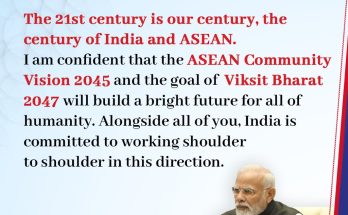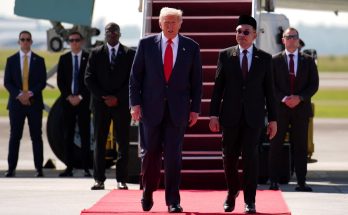Burhan Muzaffar Wani, a Hizbul Mujahideen commander for South Kashmir, died in an encounter in Bundoora village of Kokernag on July 8, 2016, along with two other militants, Sartaj Ahmad Sheikh and Pervaiz Ahmad Lashkari. Wani’s death has generated unprecedented public hysteria, in keeping with his image as a glamourous, tech savvy, insurgent. The lessons to be drawn from this event go beyond the conventional understanding of violence in Kashmir.
A school dropout from the Shareefabad area of Tral, Pulwama district of Jammu and Kashmir, Burhan Wani effectively played the victimhood narrative by stating that he had joined the Hizbul Mujahideen (HM) at the age of 15 in reaction to the brutality of the Security Forces, which had beaten his brother, Khalid, unconscious in the summer of 2010 on the streets of Tral. Wani eschewed the traditional gun-toting route and innovatively used his social media skills, thus changing the public face of militancy in Kashmir by crowd sourcing support in a manner popularised by the agitators of the Arab Spring and the ISIS in Syria/Iraq.
Wani’s Use of Social Media
Wani’s initial stint in the HM in 2011 was that of a courier/messenger; the differentiator came with his cyber outreach. He created a Twitter handle @Gazi_Burhan2 in October 2012, which he used to upload photographs of atrocities – overtly graphic pictures of violence – allegedly perpetrated by Security forces as well as virulently anti-India and anti-Modi content. His calls for joining the ‘Jihad’ were accompanied by qur’anic verses, emotive demands for “Azadi” and exhortations to establish the Nizam-e-Mustafa (God’s government) in Kashmir. In a first action of its kind, he started sending photographs of himself and other militants with faces uncovered, in identifiable locations around Srinagar, which gave disaffected youth a sense of identity and imparted the idea that militancy was a heroic, fairly risk-free, job. His message to join the ‘Jihad’, and not become informers of the Army or Police, gained traction. And in an obvious recruitment drive, he offered remunerations of Rs 35,000 to whomever was willing to join. His video and twitter messages highlighted his fight against the Indian establishment. And because of his tweets, Mohammad Ikhlaq, lynched in Dadri on suspicion of consuming beef, and Zahid Ahmed, a Kashmiri trucker who was attacked in Udhampur, have become household names across the Valley.
In August 2015, Wani uploaded a video on a Facebook account calling for the establishment of a Khilafat in Kashmir. This was a message sent to his target audience to emphasise the Islamic underpinnings of his initiatives. There were no calls for plebiscite or implementation of UN resolutions on Kashmir, etc. Instead, the communication was directed to the Kashmiri youth, urging them to join his outfit, and to the Kashmir police, asking them to shun their fight against the militants. There were no references to the ageing Hurriyat Council or the HM leadership in Pakistan. The video, which was professionally made with Burhan Wani and two other militants in military fatigues, with a Kalashnikov, a pistol and a Quran prominently displayed, went viral in minutes and was widely circulated on WhatsApp in Kashmir, before the Kashmir police took action to block the page. The Cyber Cell of Kashmir police in Srinagar has been valiantly combating the activities of Wani and other militants/sympathisers in the virtual world, but is seriously constrained by lack of qualified staff and meagre resources.
In a video uploaded on YouTube and Facebook on June 8, 2016, Wani commented on controversies around the proposal for the establishment of Sainik Colonies and a separate township for Kashmiri Pandits. He tapped into the resentment among Kashmiri Muslims on this matter. His message was: “The Hindus of this place, who reside outside, they can come to their homes to stay there. If they stay at places where they have their homes, their land, they will find us as their guards… But these separate Israel-type colonies, this is an Indian conspiracy against us. We will act against them (separate Pandit colonies).” In the same video, he stated that the HM would “act against every man in uniform who stands for the Indian Constitution,” and urged the general public to keep note of the police personnel and their movements. This message again was widely circulated through the Valley, and it can be seen that attacks on the army, paramilitary forces and the police have escalated sharply since Wani started his diatribes against the security forces. To give an immediate example, the wife and daughter of Mohammad Ashraf Pal who is posted as duty officer at Sangam police post in Bijbehara area of Anantnag district, were beaten up by a mob on July 13 – a departure from the militants’ usual practice of not attacking families of officers. Organised activities by the Sanghbaaz – the stone pelters – have shown an upsurge, reminiscent of the situation in 2010, with social media activists terming it as Kashmiri Intifada.
More recently, focussing on the current controversies around Dr. Zakir Naik and his purported role in radicalising the Dhaka terrorists, Wani tweeted a picture of the televangelist on July 7, a day before he died, with the text, “Support Zakir Naik or Time Will Come When Qur’an Recitation Will Be Banned.” He had tagged Dukhtaran-e-Millat chief Aasiya Andrabi, Lashkar-e-Taiba chief Hafiz Sayeed, Hurriyat Conference leader Mirwaiz Farooq, Canadian Wahhabi preacher Bilal Philips, former Fox international fellow at Yale University Inshah Malik, and Dukhtaran-e-Millat general secretary Nahida Nasreen Noor. Support for Dr. Zakir Naik has gathered momentum in the Valley following the tweet and Burhan’s death.
Wani’s Target Audience
Wani’s social media outreach had created a hype in the press, both in India and Pakistan, with commentaries stating that he was the emerging cult figure in Kashmir who had generated a new phase in the separatist movement which had been quiescent since 2010. Around 60 per cent of the Valley’s population is below 30, often unemployed, and hyperactive on the social media, giving Wani a readymade target audience. By 2013, he was being called the poster boy of the Kashmir insurgency by both the national and international media, given his dedicated fan following in the Valley and in Pakistan-occupied Kashmir (PoK). According to the J&K Police, while it would be difficult to quantify the reach of Wani’s cyber blitz, he has undeniably attracted and influenced young minds to the idea of militancy. Evidence of this was seen in the crowds who attended his funeral on July 9, defying curfews, and far outnumbering the funeral processions for Mufti Mohammad Syed. Consequently, after a hiatus of 15 years, local Kashmiri youth are once again outnumbering Pakistani terrorists. According to official figures, north Kashmir has 66 local and 44 foreign terrorists; and, in south Kashmir, locals number 109 and foreign terrorists are a mere seven, according to police records.Commenting on the trend, Lt Gen Satish Dua, Corps Commander, 15 Corps, had opined that “The new strategy is to recruit locals and give them rudimentary training in the hinterland because the adversary (read Pakistan) is not able to push terrorists across the line of control.” In view of Wani’s disruptive activities, the Government of India had in July 2105 announced a bounty of 10 lakh rupees for information leading to his arrest.
Protests against his killing
Given the above backdrop, Burhan Wani’s killing has been a major operational success for the Special Operations Group of J&K Police. Adverse public reaction in Kashmir, though expected, snowballed into mass protests (with 33 people dead and over 500 injured), underscoring the extent of alienation in the Valley. This trend has been noted earlier during the funeral of Lashkar-e-Taiba commander Abu Qasim (October 31, 2015), who had ambushed and killed J&K Police sub-inspector Mohammed Altaf, when over 20,000 people attended his funeral. The high-pitched support for a slain Pakistani terrorist showed that there was a wide swath of support for the Lashkar’s religio-militant zeal, a fault line Burhan Wani was able to exploit. To reiterate, Wani’s funeral gathered an unprecedented number of mourners from all walks of life, including women and children, but predominantly young men in the age group of 15 to 30 years. Many were seen treading several kilometres on foot, travelling in mini-buses, load carriers, trucks, cars and motor-bikes, and shouting pro-freedom, pro-Hizb, pro-Burhan and anti-India slogans. “We will fight our own battles, there will be a Burhan Wani coming out of every Kashmiri house” was the slogan of choice, demonstrating that for a large number of mourners the killing of Wani was a call to rejuvenate the armed resistance.
Another incendiary development was that several mosques were echoing the mourners and asking people to join the “Jihad: against India — a theme that is likely to be repeated in the Friday Qutbah prayers on July 15. This is a cause for concern as the maulvis in many of the mosques in Kashmir are not locals, but are from Uttar Pradesh and are more Wahhabist/Salafist in their leanings, adhering to the Jamaat-ud-Dawa line in Pakistan, as against the essentially Sufi form of Islam traditionally practiced in Kashmir.
The Pakistan Angle
Eye witnesses quoted by Times of Islamabad said that Wani’s family wrapped his dead body in a Pakistani flag during his funeral and he was also buried with it.Pakistani flags, according to the “Greater Kashmir” website, were displayed around the Wani household and Burhan Wani’s father, Muzzafar Wani, a school principal, has been a long-time member of the Jamaat-e-Islami, with pro separatist sentiments. The website has quoted another family member as saying that “The Geneva convention gives us the right to fight for our right to have the self-determination as we are an internationally recognized disputed territory under the United Nation’s resolutions on which India has signed.” A Facebook comment by JNU student Umar Khalid, who is out on bail in a sedition case, comparing Burhan Wani to Che Guevara – “I don’t care if I fall as long as someone else picks up my gun and keeps on shooting. These were the words of Che Guevara, but could have just been Burhan Wani’s too” – has also found prominent place in the Pakistani media. Over the past week, the Pakistani media has used the death of Burhan Wani to drive the message to local and international audiences that Kashmiri support is firmly with Pakistan.
Pakistan’s role in cultivating, grooming and nurturing Kashmiri militants needs no elaboration. Reports suggest that Hafiz Saeed mooted the idea of using social media extensively in order to fuel anti-India sentiments in the Valley. The Jamaat-ud-Dawa/Lashkar-e-Taiba has several well trained social media cells across Pakistan. Hafiz Saeed has been working extensively on these cells to defy a ban imposed on the JuD’s media coverage in Pakistan. These cells have been used under the umbrella of several front organisations such as Difa-e-Pakistan Council and Falah-e-Insaniat Foundation Pakistan.18 The symbiotic relationship between JuD and HM often extends to training and motivating cadres, and it is conceivable that social media initiatives by young militants like Burhan Wani not only gained approval but also support from these groups. The ‘virtual’ war was an innovative weapon, which could be used separately but in a syncretic way with the Hurriyat Council and the older Kashmiri leaders. Online messaging, while very effective in opinion creation, gained extra traction in Kashmir due to the prevailing disenchantment with the political elite. According to officials dealing with counter-insurgency, this helped an HM cadre like Burhan Wani, with no real militant credentials, to quickly gain iconic status. They also opine that he was a ‘Pakistani trap’, which the Indian security agencies fell into.Pakistan is trying to maintain the anti-Indian tempo generated by Burhan Wani’s killing by keeping a firm hold on the activities of the HM. The Hizb command Council met on July 12 under the chairmanship of the outfit’s supreme commander, Syed Salahuddin, at Muzaffarabad in PoK and decided to appoint Mehmood Ghaznavi to replace Burhan Wani as the new HM commander in Kashmir.Ghaznavi is an unknown militant who has not got a photograph of himself in the public domain, and is not immediately recognisable as an associate of Wani’s. Simultaneously, the group has appointed Sabzar Ahmad, @‘Sab Don’, son of Ghulam Hassan Bhat, resident of Ruthsana in Tral, as the new commander of one of its wings in south Kashmir. Sabzar Ahmad was a close associate and childhood friend of Burhan Wani, and joined HM in 2015 after Burhan Wani’s older brother, Khalid, was killed. He was seen by the public in Wani’s funeral, and is reported to be aware of his contacts across the LoC. He is known to be very tech savvy, and had contributed extensively to Burhan Wani’s media outreach. He is supposed to have uploaded the photographs of the Burhan Wani group on the internet. The HM will be able to fill the vacuum created by Wani’s death with comparative ease, using Sabzar Ahmad, and maintain overall control via an unknown/unidentified commander like Mehmood Ghaznavi.
Burhan Wani has certainly changed the dynamics of militancy in Kashmir. Though Omar Abdullah, Hafeez Saeed, and Syed Salahuddin sent tweets condemning his killing, none attended his funeral, which was actually marked by a groundswell of public support, especially among the youth. Sustained publicity is being given to young casualties, including feeds that over a hundred have been shot in the eyes. Pakistan-based terrorists have been feasting on these images, and spewing venom about the excesses of the Indian State. Hafiz Saeed’s Twitter handle @hafizsaeedlive was suspended by Twitter following reports by Indian security agencies that it was being used to incite violence in Kashmir. Now, the suspension issue is being used by the JuD to generate Tweets from various supporters that the United States of America supports India in the latter’s oppression of Kashmir, emphasising thereby that Pakistan was the only recourse left for the Kashmiri people. This was the line adopted by Pakistan in the UN on July 13, but which found little support from the international community. At home, however, New Delhi has to contend with a restive Kashmir which has been exposed to sustained online rabble rousing. Hence, while the security forces will certainly bring order to the situation sooner rather than later, the endemic issues of disaffection and alienation in Kashmir need urgent redressal.
Courtesy:IDSA
Author Profile
- India Writes Network (www.indiawrites.org) is an emerging think tank and a media-publishing company focused on international affairs & the India Story. Centre for Global India Insights is the research arm of India Writes Network. To subscribe to India and the World, write to editor@indiawrites.org. A venture of TGII Media Private Limited, a leading media, publishing and consultancy company, IWN has carved a niche for balanced and exhaustive reporting and analysis of international affairs. Eminent personalities, politicians, diplomats, authors, strategy gurus and news-makers have contributed to India Writes Network, as also “India and the World,” a magazine focused on global affairs.
Latest entries
 DiplomacyOctober 4, 2025UNGA Resolution 2758 Must Not Be Distorted, One-China Principle Brooks No Challenge
DiplomacyOctober 4, 2025UNGA Resolution 2758 Must Not Be Distorted, One-China Principle Brooks No Challenge India and the WorldJuly 26, 2025MPs, diplomats laud Operation Sindoor, call for national unity to combat Pakistan-sponsored terror
India and the WorldJuly 26, 2025MPs, diplomats laud Operation Sindoor, call for national unity to combat Pakistan-sponsored terror India and the WorldJuly 25, 2025When Fire Ends, Diplomacy Begins
India and the WorldJuly 25, 2025When Fire Ends, Diplomacy Begins India and the WorldJuly 16, 2025Operation Sindoor and its Aftermath: India’s Successful Diplomatic Outreach
India and the WorldJuly 16, 2025Operation Sindoor and its Aftermath: India’s Successful Diplomatic Outreach







